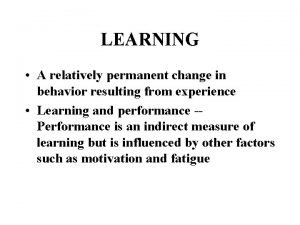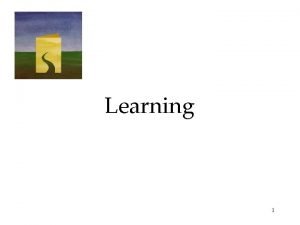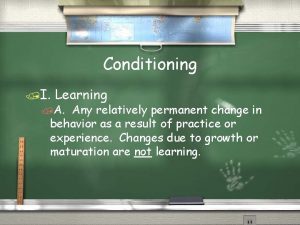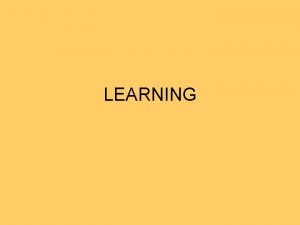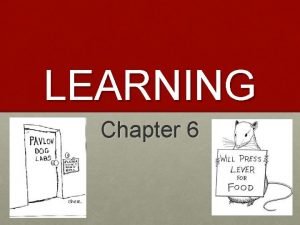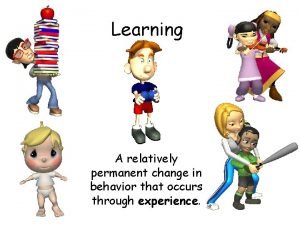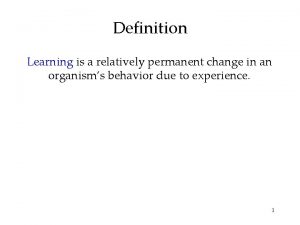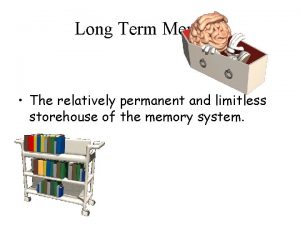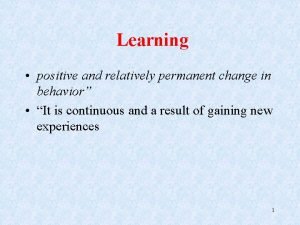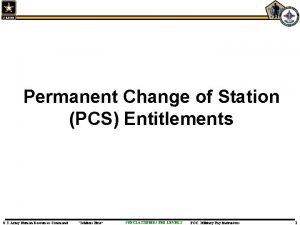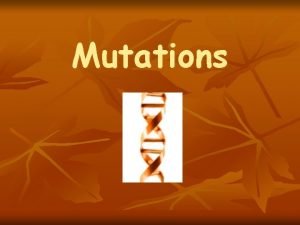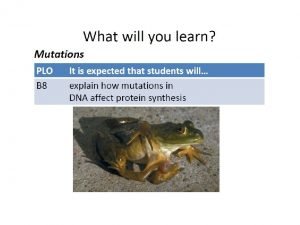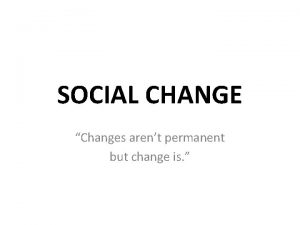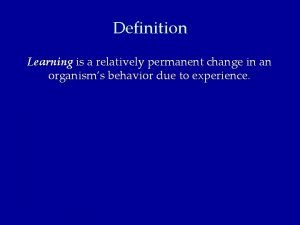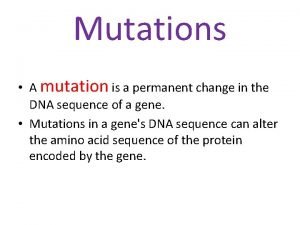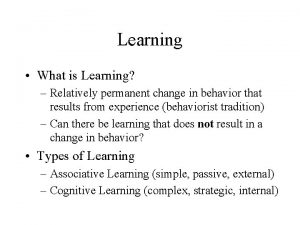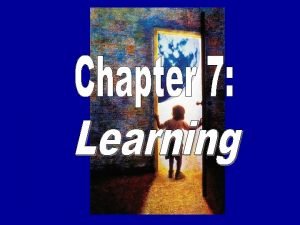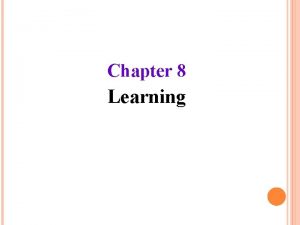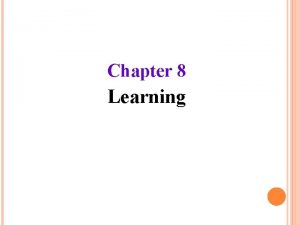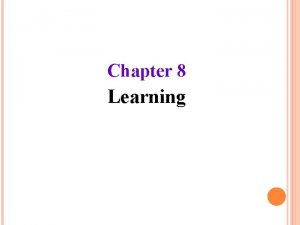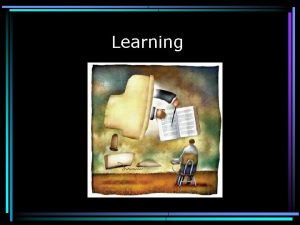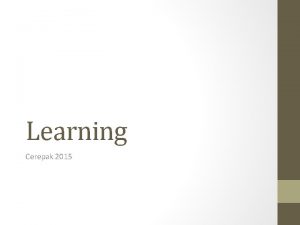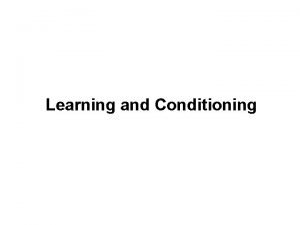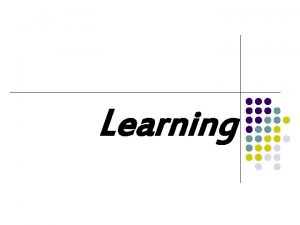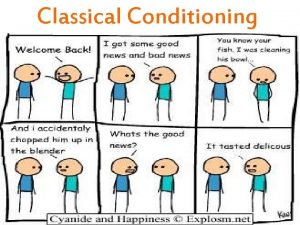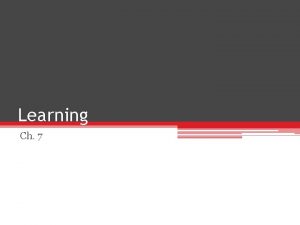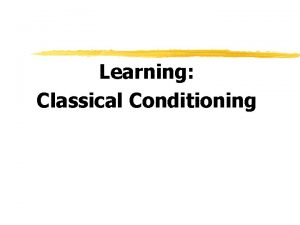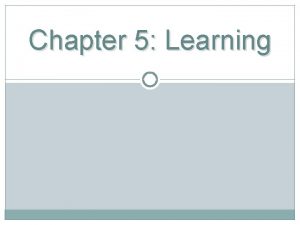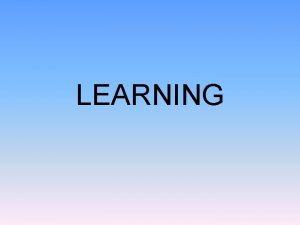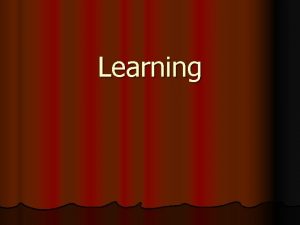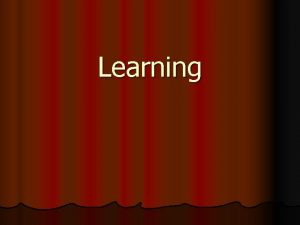What is learning A relatively permanent change in


















- Slides: 18

What is learning?

“A relatively permanent change in behaviour that results from practice” “A meaning-making process”

Does what you teach translate into what your learners learn?




ATHERTON J S (2009) What is learning? http: //www. learningandteaching. info/learning/whatlearn. htm

Motivation to learn Maslow’s hierarchy of needs ATHERTON J S (2009) Motivation http: //www. learningandteaching. info/learning/motivation. htm

Note down examples of: • Questions you ask your learners • The purpose of each of these questions

Surface v deep learning • Recall/reproduce facts • Aim to pass exams • No reflection • No concept of overall patterns or themes • Relate concepts to existing knowledge and everyday life • Organise and restructure new knowledge • Challenge new concepts • Determine what is significant Reece & Walker (2003) Teaching, training and learning

Bloom’s Taxonomy • Classify forms and levels of learning • Identifies three domains of learning – Cognitive (Knowledge) – Affective (Attitude) – Psycho-motor (Skills)

Bloom’s Taxonomy • Include lower and higher level tasks • Staying with tasks at the bottom the taxonomy can lead to surface learning • The full spectrum of the taxonomy could appear at every academic level

Bloom’s Taxonomy – effective questioning Pair work • Assign the questions to the appropriate level of Bloom’s taxonomy • Review the questions you habitually use

Memory ATHERTON J S (2009) Memory http: //www. learningandteaching. info/learning/memory. htm

Triggering the memory 1. 2. 3. 4. 5. Unusual info Organised info Make associations e. g. verbal, visual Review during and after Create multisensory memories Rose & Nicholl (1998) Accelerated Learning for the 21 st Century

Learning cycle (Kolb)

Learning by doing / experiential learning • Simulations, real-life problem-solving tasks, use of props and arterfacts • They stimulate high-level thinking skills i. e. reasoning, enquiry, creative thinking, evaluation

Active learning “Active learning? You must be joking, there’s not time for entertainment with all this content to cover. ”
 Permanent change in behavior resulting from experience
Permanent change in behavior resulting from experience What make learning permanent
What make learning permanent Permanent change in behavior
Permanent change in behavior Is any relatively permanent change in behavior
Is any relatively permanent change in behavior Relatively permanent
Relatively permanent Is the systematic relatively permanent
Is the systematic relatively permanent A relatively permanent change of behavior is called
A relatively permanent change of behavior is called Define permanent change
Define permanent change The relatively permanent and limitless storehouse
The relatively permanent and limitless storehouse Relatively permanent
Relatively permanent Cuadro comparativo de e-learning
Cuadro comparativo de e-learning Dd form 2560 advance pay certification/authorization
Dd form 2560 advance pay certification/authorization Beneficial mutations examples
Beneficial mutations examples Define as permanent change in dna.
Define as permanent change in dna. Changes aren't permanent but change is
Changes aren't permanent but change is Define permanent change
Define permanent change Permanent change in dna sequence
Permanent change in dna sequence Learning is permanent
Learning is permanent Shaping psychology definition
Shaping psychology definition
